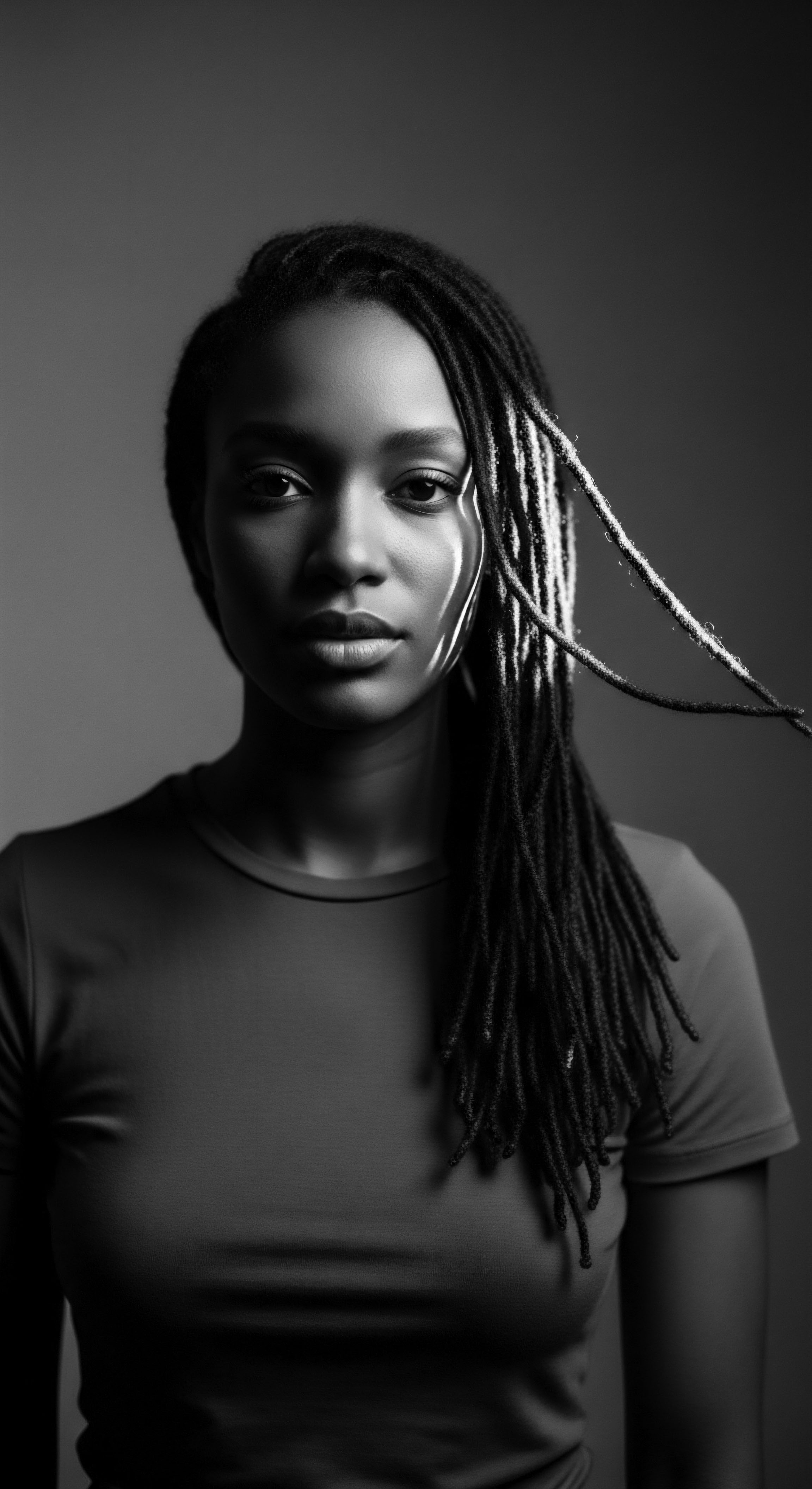
Roots
Consider, for a moment, the very strands that spring from a scalp, not merely as biological structures, but as silent chronicles. For those whose lineage traces through the intricate spirals and tight coils of textured hair, this genetic inheritance holds more than just keratin and pigment. It cradles stories, echoes of ancient lands, and the profound, whispered wisdom of generations. Our hair, a living extension of self, has always been a communicator, a repository of meaning far predating written language.
It stands as a testament to ingenuity, adaptation, and the unwavering spirit of communities that harnessed its unique qualities to speak volumes without uttering a single sound. The heritage held within each curl and kink is a lexicon waiting to be truly heard, offering glimpses into collective pasts, social structures, and enduring legacies.
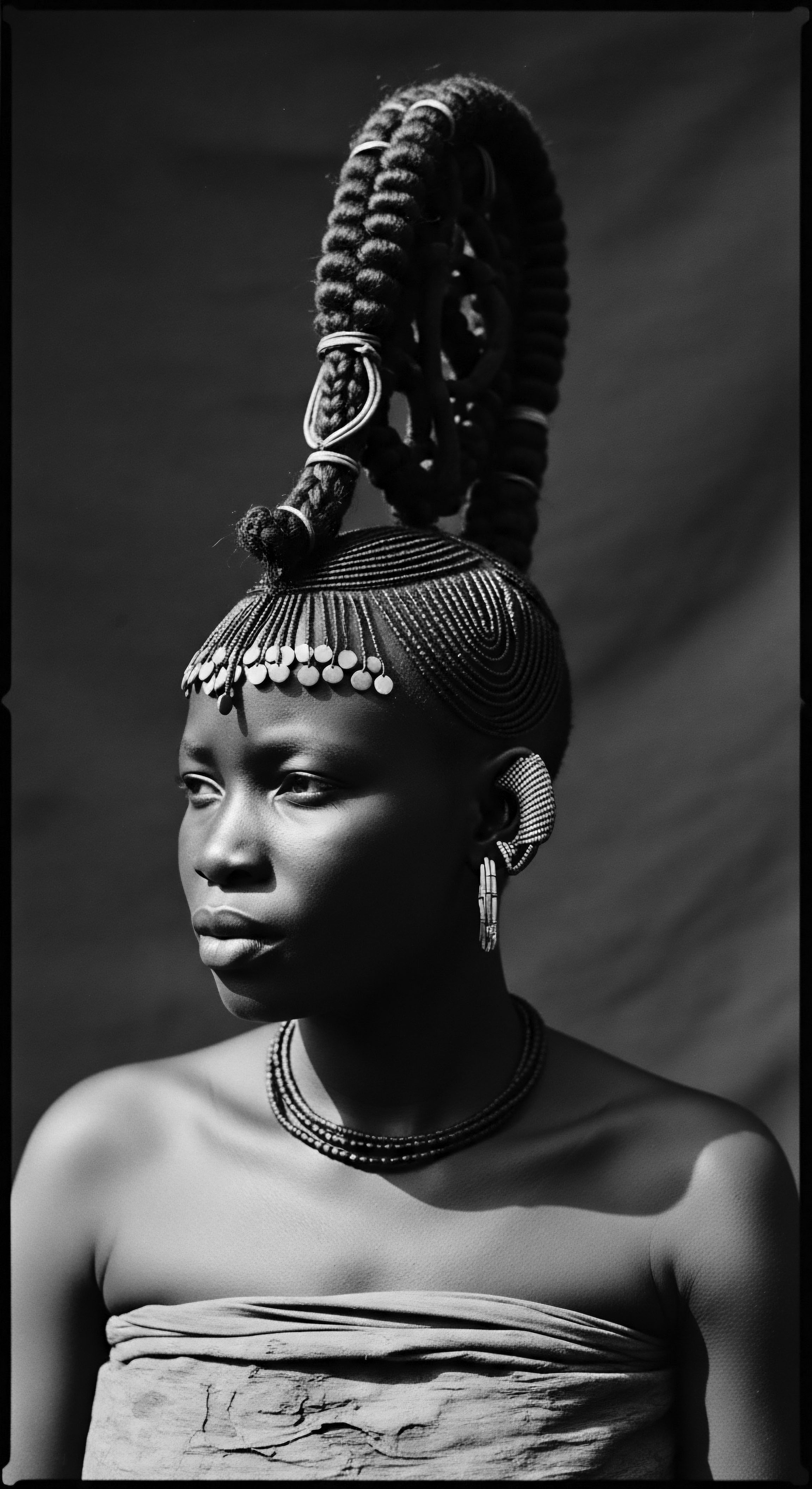
Hair’s Earliest Codes
From the dawn of human existence, across the vast and varied landscapes of Africa, hair was never a trivial matter of aesthetics. It held intrinsic value, a visible declaration of self and belonging. The earliest depictions, carved into rock or sculpted from clay, reveal an ancestral reverence for coiffure. These were not random arrangements but deliberate statements, forming a complex vocabulary understood by community members.
The texture itself, born of elemental biology, lent itself to intricate manipulation, a canvas ready for the hands of skilled artisans and cultural custodians. These initial forms of hair artistry were deeply communal, often part of rituals and ceremonies that bound individuals to their collective identity.
The morphology of textured hair, with its elliptical cross-section and varying degrees of curl, allows for exceptional hold and malleability, a quality that ancient communities understood and exploited. This characteristic enabled the creation of durable, complex styles that could last for extended periods, making them ideal carriers of information. The very structure of the hair, therefore, provided the fundamental medium for these early communicative practices.
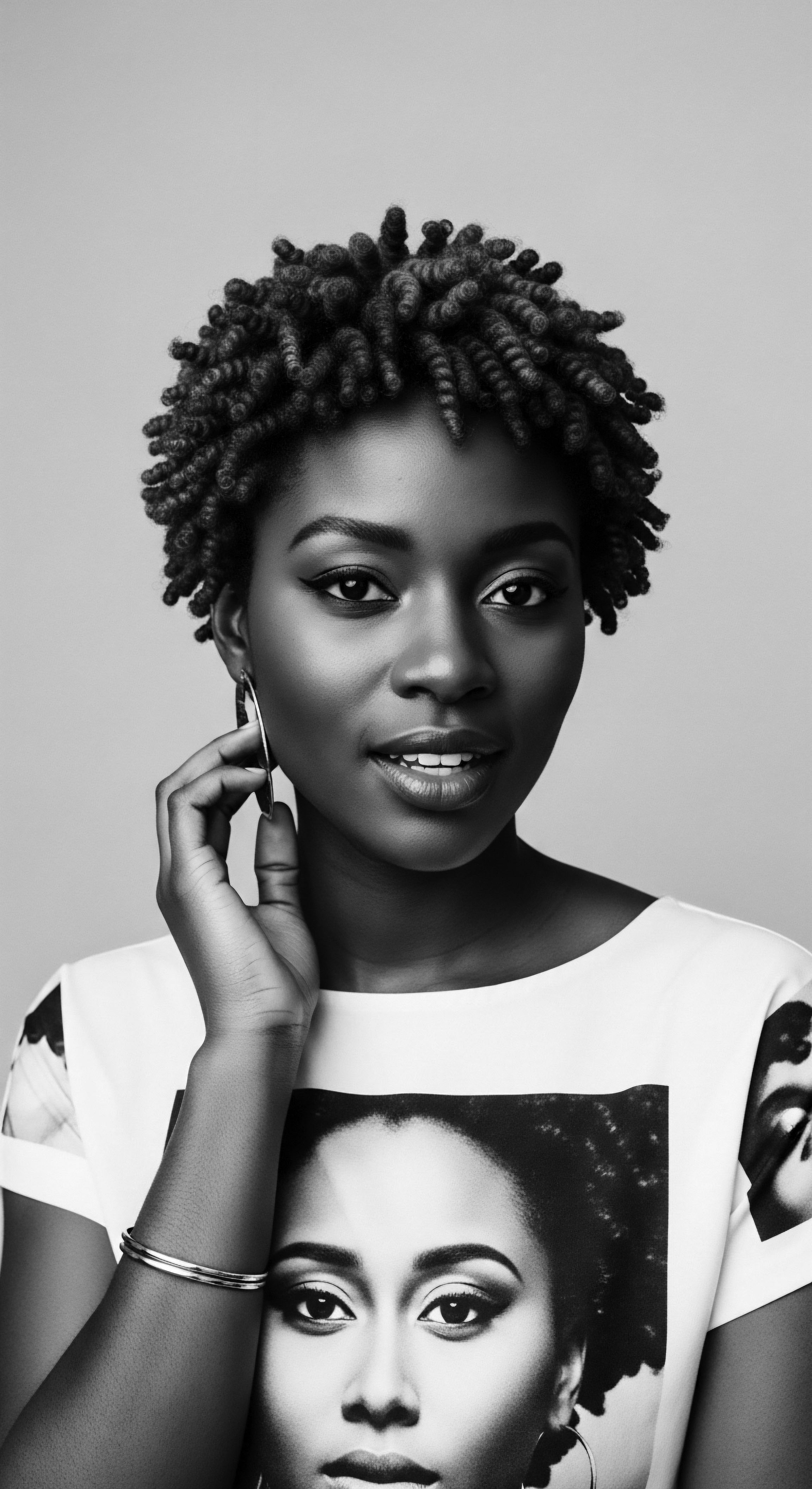
How Did Ancestral Hair Practices Mirror Social Structures?
Across diverse African societies, from the sprawling empires of West Africa to the pastoral communities of the East, hair served as a nuanced social marker. It broadcast an individual’s Age, marital standing, tribal affiliation, social class, and even religious beliefs. A young woman’s braids might differ starkly from those of an elder, signaling readiness for marriage or a lifetime of wisdom gathered. Warriors might wear styles indicating valor or readiness for conflict, while spiritual leaders bore coiffures that connected them to ancestral realms.
Consider the meticulousness involved in maintaining these styles, often a communal act, particularly among women. These grooming sessions transcended mere physical care; they were intergenerational moments of storytelling and knowledge transmission. As hands worked through coils, histories were recounted, traditions explained, and community values reinforced.
The physical act of styling became a pedagogical tool, embedding cultural norms and historical narratives within the very fabric of daily life. The continuity of these practices, even through immense disruption, speaks to their deep significance.
Textured hair, from its elemental biology, provided a unique canvas for communities to inscribe identity, status, and collective memory.

The Lexicon of Coils and Crowns
The vocabulary surrounding textured hair in ancestral contexts was rich and descriptive, often tied directly to observable patterns and their symbolic weight. Terms were not arbitrary; they named formations that spoke of purpose and place within the world. This inherent descriptive nature allowed hair to become a legible text for those who understood its grammar.
The capacity of coily hair to be shaped into elevated forms, adorned with beads, shells, or precious metals, lent itself to creating visible crowns of communication. These adornments could themselves hold specific meanings, indicating wealth, spiritual protection, or allegiance to a particular lineage.
The way hair was parted, the direction of braids, the number of twists, and the embellishments chosen all formed part of this intricate language. For example, some societies might shave one side of the head to indicate mourning, while others might adorn their hair with clay or ochre for celebration. Each alteration, each embellishment, contributed to a silent dialogue understood by the initiated members of the community, serving as a constant reminder of one’s place within the societal tapestry.

Ritual
The shaping of textured hair, whether through braiding, twisting, or coiling, has always been more than a physical act. It is a ritual, steeped in intention and connection, often serving as a powerful medium for cultural expression and covert communication throughout history. These practices, passed down through generations, carry the weight of ancestral ingenuity, transforming hair into a living archive of collective experience. The hands that style are not just arranging strands; they are inscribing heritage, weaving messages that transcend words, often in contexts where overt speech was perilous.

The Symbolic Geometry of Braids
Braiding, in particular, stands as a prime example of textured hair’s communicative power. Beyond mere adornment, specific patterns and designs conveyed precise messages. In many pre-colonial African societies, the complexity of a braid, its direction, and the inclusion of certain partings could indicate a person’s tribal identity, social rank, or marital status. These intricate geometric patterns, often echoing agricultural landscapes or spiritual symbols, formed a visual language legible to those within the community.
The very act of braiding often took place in communal settings, fostering bonds and creating opportunities for the transmission of cultural knowledge. It was during these intimate sessions that stories were shared, wisdom imparted, and the meanings of particular styles explained, ensuring the continuity of this non-verbal communication system. This practice continued, even intensified, in the face of profound adversity.

How Did Hairstyles Become Maps of Freedom?
Perhaps one of the most compelling and poignant illustrations of textured hair as a communication tool lies in its use during the transatlantic slave trade and the subsequent periods of enslavement. Stripped of their languages, traditions, and often their very names, enslaved Africans transformed their hair into a clandestine network of information. This powerful act of resistance, often unseen by oppressors, served as a means to convey vital intelligence for survival and escape.
In the context of colonial Colombia, for instance, a particularly striking example emerges from the history of San Basilio de Palenque, the first free African village in the Americas. Legend and oral history recount how enslaved women would braid intricate patterns into their hair that literally served as maps to freedom. These cornrows, called ‘canerows’ in some regions due to their resemblance to rows of sugarcane, were not simply decorative.
Curved braids might represent winding paths or rivers, while straight lines indicated direct routes through forests or fields. The number of braids or their specific orientation could signal rendezvous points or safe houses along escape routes.
Oral histories from Afro-Colombian communities attest to styles such as ‘departe,’ thick braids tied into buns on top of the head, signaling plans to depart or escape. Beyond mapping routes, these braided designs also served as discreet storage for small, essential items for survival in the wilderness. Seeds, gold nuggets, or even small tools could be woven into the tightly coiled hair, providing nourishment or implements once an escapee had found temporary freedom.
This profound use of hair as a living, concealed cartography underscores its role as a silent, yet potent, tool of resistance and a keeper of hope amidst despair. It represents a profound testament to the resourcefulness of those who found ways to communicate and preserve their lineage even when facing unimaginable oppression.
Hairstyles during enslavement transcended aesthetics, becoming coded maps of resistance and survival, silently guiding the longing for freedom.
This practice highlights a critical aspect of textured hair ❉ its unique ability to hold a style firmly, allowing such intricate, information-bearing designs to remain intact for days or even weeks. European colonizers, often viewing these hairstyles as merely “primitive” or “unruly,” unwittingly overlooked the complex intelligence being woven right before their eyes. This oversight was, in itself, a form of communication—a message of defiance received and acted upon by those who understood its hidden syntax.
- Departes ❉ A specific braided style, often with thick braids tied into buns, used by enslaved women in Colombia to signal plans for escape.
- Curved Braids ❉ Represented winding paths, rivers, or challenging terrains on escape routes.
- Straight Braids ❉ Indicated direct, unobstructed pathways to safety.
- Concealed Items ❉ Seeds, gold, or small tools hidden within braids for sustenance and aid during escape.
| Historical Period/Context Pre-Colonial African Societies |
| Communicative Function of Hair Social Status, Identity, Life Stages |
| Example/Significance Intricate patterns indicating tribe, marital status, or roles within the community (e.g. warrior, elder). |
| Historical Period/Context Transatlantic Slave Trade Era (Colombia) |
| Communicative Function of Hair Escape Routes, Covert Messages, Survival Aid |
| Example/Significance Cornrows braided as maps (e.g. 'departe' style) and hiding places for seeds or gold. |
| Historical Period/Context Post-Emancipation/Civil Rights Movement |
| Communicative Function of Hair Political Statement, Reclamation of Identity |
| Example/Significance The Afro as a symbol of Black pride, resistance against Eurocentric beauty standards, and connection to heritage. |
| Historical Period/Context Throughout history, textured hair has served as a resilient canvas for expressions of heritage, protest, and survival. |
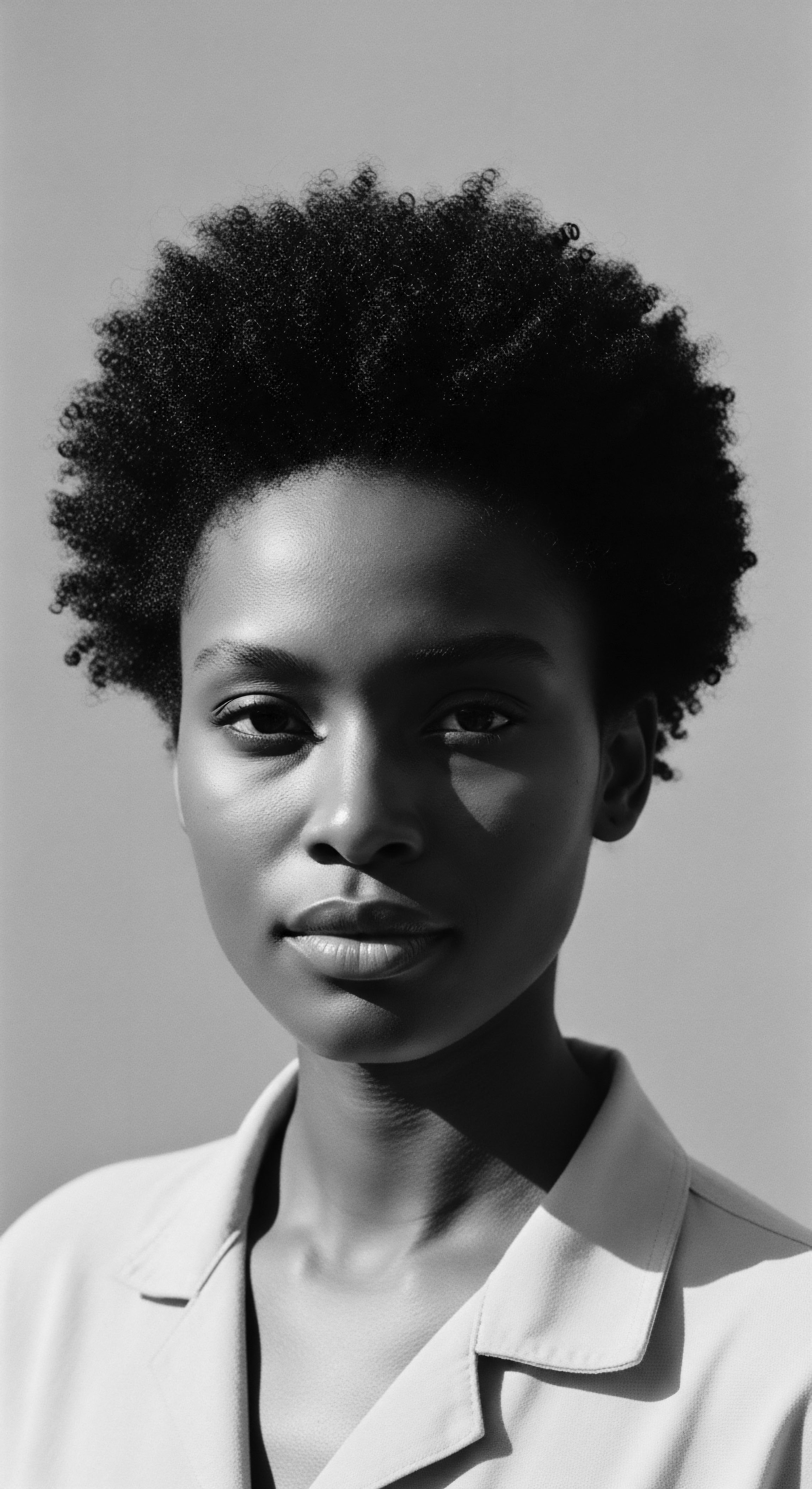
Relay
The communication encoded within textured hair extends beyond immediate messages; it acts as a relay, a continuous transmission of ancestral wisdom, cultural resilience, and profound identity across time and space. This enduring dialogue, spoken through the fibers themselves and the rituals surrounding their care, represents a living continuum of heritage. Each generation receives and interprets these signals, adding new layers of meaning while preserving the integrity of the original transmission. The relay of knowledge is not merely about facts; it is about the feeling, the deep connection to a lineage that has consistently found ways to assert its presence and voice against formidable odds.

How Does Hair Care Itself Serve as a Cultural Message?
Beyond specific styles, the very practices of textured hair care carry significant cultural meaning, acting as a form of intergenerational communication. The ritual of cleansing, conditioning, and oiling hair, often performed by elders for younger family members, serves as a conduit for transmitting ancestral knowledge about plant-based remedies, traditional techniques, and the spiritual reverence for hair. These moments are not just about physical health; they are profound lessons in self-worth, communal care, and the enduring connection to one’s roots. A mother’s hands working through a child’s coils, sharing stories of grandmothers and their methods, effectively communicates a sense of belonging and a proud continuity of heritage.
The collective memory of these practices, adapted and preserved over centuries, underscores a shared identity. For example, the use of certain oils or herbs, passed down orally, often reflects a localized botanical knowledge unique to a particular ancestral region, thus communicating a specific geographic and cultural origin. This sustained practice speaks to a deeper truth ❉ that caring for textured hair has always been a holistic endeavor, intertwined with spiritual well-being and community health.
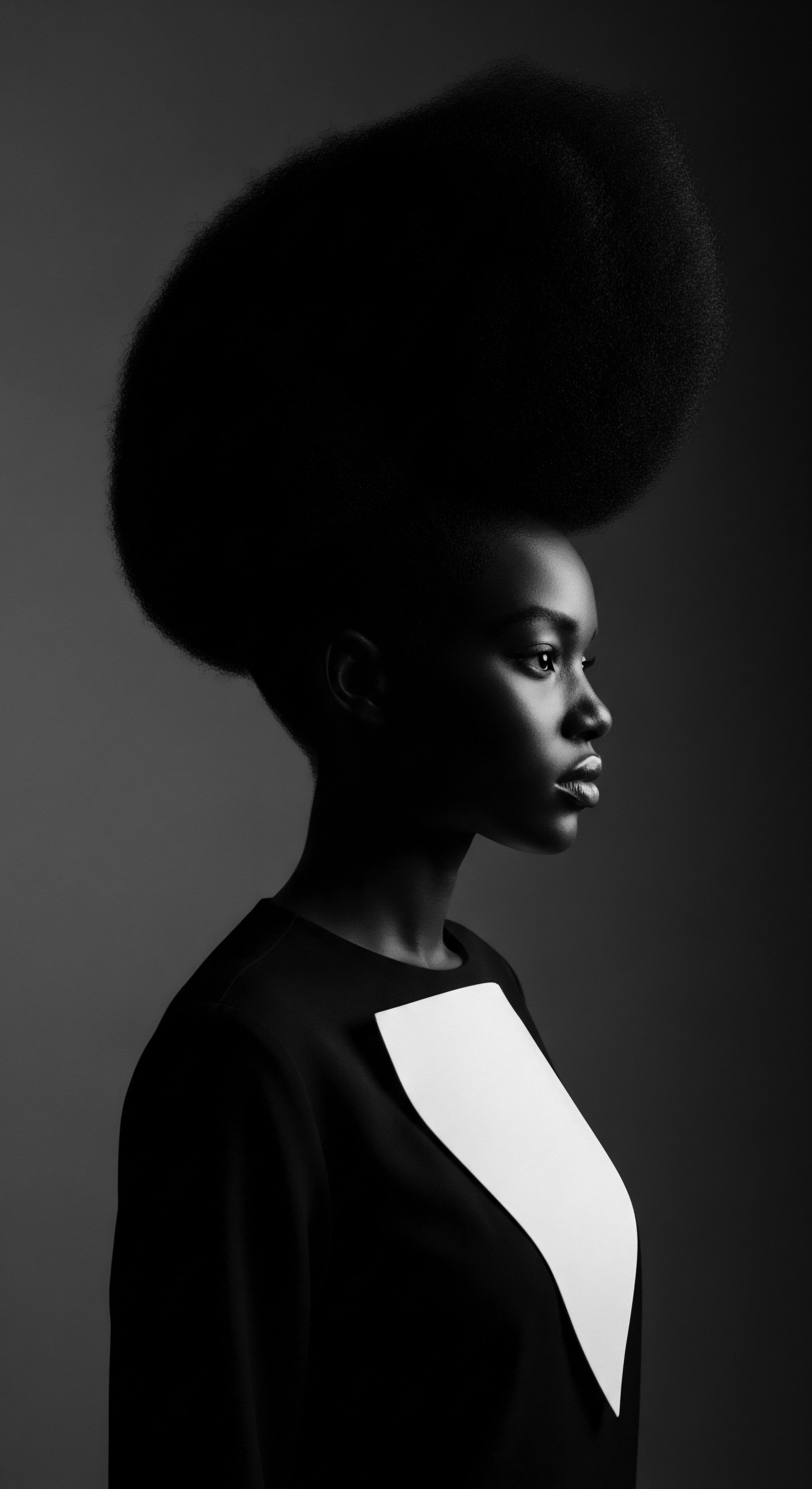
The Enduring Symbolic Power of Adornment
Adornments on textured hair further amplified its communicative capabilities, functioning as symbols of status, protection, or even mourning. Beads, cowrie shells, and metals were not merely decorative; each element could carry a specific message or historical reference, understood by those within the cultural sphere. The Himba people, for instance, adorn their hair with a paste of ochre, butter, and herbs, known as ‘otjize,’ a practice that conveys their connection to their land, their cattle, and their aesthetic ideals. This practice communicates a deep bond with their environment and a continuation of ancient traditions.
In many West African cultures, cowrie shells, when incorporated into hairstyles, could signify wealth, fertility, or spiritual protection. The very act of placing these elements, often with great deliberation, transformed the hairstyle into a visual narrative, speaking silently to observers about the wearer’s life, accomplishments, or spiritual affiliations. These practices demonstrate the capacity of textured hair to integrate diverse forms of communication, from the structural language of braids to the symbolic language of chosen adornments.
The lineage of textured hair care transmits ancient wisdom, each ritual a dialogue between past and present generations.
The legacy of these communication methods is far-reaching. Even in modern times, the choice to wear natural textured hairstyles, such as afros or dreadlocks, carries profound messages of self-acceptance, cultural pride, and resistance against dominant beauty standards. This contemporary expression of heritage serves as a direct continuation of ancestral practices, relaying a message of defiance and celebration across time. The hair, in its unadulterated form, speaks of a reclamation—a powerful assertion of identity that honors the resilience of those who came before.
Consider the powerful role of textured hair as a visual marker of collective identity and a tool for social commentary in various historical movements. During the American Civil Rights Movement, the Afro became more than a hairstyle; it was a potent symbol of Black Power, a visible rejection of Eurocentric beauty norms, and a declaration of racial pride and unity. This choice of style communicated a unified front, a collective voice speaking volumes about political and cultural liberation. As Tracy Owens Patton, a professor of Communication and African-American Diaspora Studies, notes, the Afro was not simply a style; it served as “a form of protest to say, I am not going to straighten my hair anymore”.
This deliberate departure from imposed standards was a profound communicative act, transmitting a clear message of resistance and self-determination to both internal and external audiences. The very contour and volume of the Afro projected a message of unapologetic Blackness, fostering solidarity within the community and challenging the status quo.
| Adornment Type Beads/Cowrie Shells |
| Material/Source Natural materials, often traded or collected |
| Common Communicative Meanings (Heritage Context) Wealth, fertility, social status, spiritual protection, prosperity, wisdom. |
| Adornment Type Ochre/Clay Pastes |
| Material/Source Earth pigments, natural oils |
| Common Communicative Meanings (Heritage Context) Connection to land, cultural identity, spiritual purity, protection from elements, aesthetic ideals. (e.g. Himba people) |
| Adornment Type Gold/Precious Metals |
| Material/Source Mined minerals, crafted into jewelry |
| Common Communicative Meanings (Heritage Context) High social rank, royalty, spiritual power, celebration, significant life events. |
| Adornment Type Adornments transformed textured hair into living canvases, broadcasting complex messages rooted in ancestral knowledge and community values. |

Reflection
The story of textured hair, as a profound historical communication tool, reverberates through the ages, reminding us that wisdom often speaks through unexpected mediums. Each curl and coil holds the imprint of human experience ❉ the ancestral wisdom encoded in ancient styles, the clandestine messages of resistance woven during times of oppression, and the vibrant declarations of identity that continue to challenge and inspire. This understanding calls us to view textured hair not simply as a biological phenomenon or a matter of personal preference, but as a living, breathing archive of heritage.
Roothea’s ethos, “Soul of a Strand,” truly comes to life when contemplating this lineage of communication. It invites us to listen to the silent narratives held within our hair, recognizing its enduring power to connect us to our forebears, to our communities, and to our deepest selves. The resilience of these practices, adapting through forced migration and societal shifts, underscores a profound truth ❉ what is deeply rooted in spirit and purpose cannot be easily severed.
As we continue to care for textured hair today, we participate in an ancient dialogue, honoring a legacy of communication that defies the constraints of spoken words, a timeless relay of strength, beauty, and unwavering spirit. The conversations etched into the very strands remain, guiding our present and informing our collective future.

References
- Bogaard, Cecilia. (2022). African Slaves Used Braids to Communicate Escape Routes in Colombia. Ancient Origins.
- Tucker, Ashley. (2022). The Art of Healing ❉ A Nostalgic Ode to Black Hair Braiding. Copyright.
- Beds SU. (2022). Black History Month 2022 ❉ The History Behind Cornrows. Beds SU.
- Wikipedia. (Current). Cornrows.
- Wits Vuvuzela. (2024). FEATURE ❉ Braids are more than a hairstyle. Wits Vuvuzela.
- Odele Beauty. (2024). A History Lesson On Hair Braiding. Odele Beauty.
- Ansah, Emma. (2025). BLACK HISTORY FACTS ❉ The Secret History Of Cornrows ❉ How This Ancient Hairstyle Helped Slaves Escape. TDS NEWS.
- ArcGIS StoryMaps. (2023). Hair Mapping.
- Applied Worldwide Nigeria. (2024). Hidden Messages in Cornrows for the People of Color.
- CBC Radio. (2021). Tangled Roots ❉ Decoding the history of Black Hair.
- Patton, Tracy Owens. (2006). Hair Story ❉ Untangling the Roots of Black Hair in America. St. Martin’s Press. (Cited within CBC Radio)
